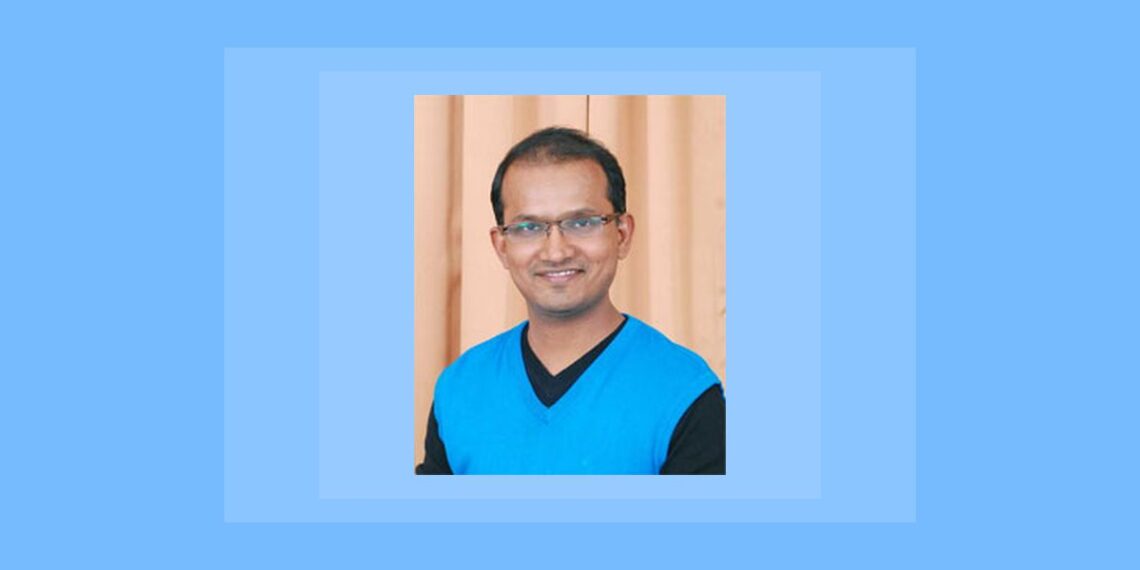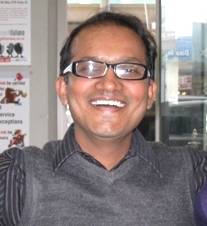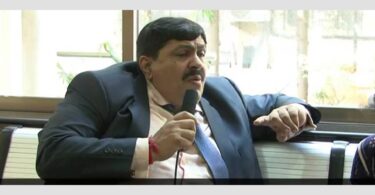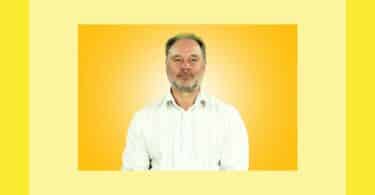Dr. Dinesh Chauhan interviewed by Dr. Rina Dedhiya Part I
Dr. Dinesh Chauhan developed the Case Witnessing Process method. He heads the non-profit ABJF foundation with his wife Dr. Urvi Chauhan, where Indian Homoeopaths are taught for free. He has been involved in teaching his methods to doctors in doctors Tamil Nadu, India.
Dr. Dinesh Chauhan Rina Dedhiya
Part 1: My Vision…
Dr. Rina: With warm hugs we welcome you to this yet very innovative venture with Hpathy again. This time we’re representing classical homeopathy in the southern part of India where Dr. Dinesh Chauhan has widely lectured. What inspired you to come up with your approach?
Dr. Dinesh Chauhan: I would like to tell you a story by Patnayak which I came across when I was lecturing in Tamil Nadu; it is a folklore which is a Tamil temple lore.
Mahadeva became a woman to deliver his devotee’s child
The story goes like this, “The River Kaveri was in spate. Dark clouds covered the sky. The sound of thunder was deafening. The rains were incessant. No boatman was willing to risk his life or his boat. A mother realized she would not be able to reach her daughter’s house in time for the delivery of her grandchild. “What should I do now?” she wailed.
“What can we do but pray to Shiva who is Mahadeva (The Great God), greater than all the devas (Gods)? Only he can help”, her husband said.
The prayers reached Mount Kailasa and so moved was Shiva by the plight of his devotee that he decided to deliver the child himself. “But she will be frightened when you approach her as you are” said Shiva’s wife, Gauri. “Look at yourself. You are smeared with ash, your hair is matted and you have a garland of skulls around your neck.”
So Shiva took the form of the old mother and went to the daughter’s house. He comforted her with songs and held her hands and wiped her sweat until the baby slipped out. He then placed the baby on the mother’s breast and cleaned the room and lit the lamps as a midwife is supposed to.
When the mother finally arrived, the daughter saw two mothers and wondered who the real one was and who the imposter was. The imposter smiled and disappeared and the daughter realized she was none other than Shiva.
This is the story which I read just before I began my first lecture there. The whole idea is that for the devotee, Shiva became her, became the mother of the daughter, because a mother or a midwife only can deliver the baby according to Indian customs. Likewise you have to become the patient to understand the patient, you have to put yourselves in the patients shoes and walk his path to become himself, to bring the whole state out, to deliver the whole state of the patient as it is, unaltered. This thought remained pregnant in my mind and helped me to become a reflection of the patient to deliver out the centre of the patient, like becoming a simillimum energy in front of the patient.
As I started lecturing here in Tamil Nadu, I wanted to live the holistic integrative principle which I always preach. I realized that may be my true calling, where I could begin my journey towards Integrative Holistic Homeopathy…
“Let me be the mirror of your deepest reflections and guide you to your journey inwards becoming the catalyst in helping you to perceive your natural self” – Rina
With this I began my first lecture in Tamil Nadu…
Dr. Rina: So what initiated this elaborate journey in Tamil Nadu. What was the motivation?
Dr. Dinesh: Around 2010, five homeopaths met me in Mumbai and told me they were studying homeopathy, and I was taken with surprise, that at the age of 50-55 years they are doing a homeopathic course. That’s when I came to know that they were Engineers and they had taken voluntary retirement and were now pursuing a full time homeopathic course in the college.
My heart went with them, and I started talking to them. They told me that they wanted to start a small homeopathic hospital and asked me whether I would like to give a small lecture. First when I went to lecture there were a limited number of people who attended the lecture, but this group had passion. They showed me a small hospital they had started, with 3 consulting rooms, and they appointed homeopaths there in the hospital.
Dr. Rina: That is indeed inspiring to know about engineers turning to homeopathy. So did you visit homeopathic colleges there?
Dr. Dinesh: Slowly they convinced government colleges there to conduct my lectures and gradually in 3-4 years they conducted my lecture in all the homeopathic colleges. Their whole aim was only to spread integrative holistic homeopathy in Tamil Nadu.
Along with lecturing for seminars, every time I would visit homeopathic colleges and take lectures there too, understand how they work and how homoeopathic education is imparted there. The other 2-3 days we would take a road trip where they would take me to some of the leading homeopaths.
Dr. Rina: So you were exploring the Homeopathic roots in Tamil Nadu. You must have had some memorable experiences.
Dr. Dinesh: One such visit I remember was to a homeopathic hospital which was run by MBBS doctors. The hospital goes by the name Vedivelli Hospital which was started by Dr. Chandrasekar, and now Dr. Srinivasan takes care of the hospital. Also a cardiologist couple was supporting this hospital.
Similarly a gynecologist couple was running a hospital where they would be prescribing homeopathic medicines to their patients and rarely allopathic medicines. This hospital was based in Dindigul. I also came across a number of homeopathic groups which met regularly. They would discuss new and old concepts, cases, organize seminars, etc…so it gave me a feeling that the whole of Tamil Nadu was on an accepting integrative homeopathic mission.
Dr. Rina: You also visited senior homeopaths?
Dr. Dinesh: Yes, I met Dr. Srinivasan, a very senior homeopath in his own clinic; at this age also he was talking to me with such a passion as if he was 30 years old.
So whether I met students in the college, or senior homeopaths running homeopathic hospitals, or senior practitioners, or these engineers who have turned to homeopathy, each one had persistence, perseverance and depth and most importantly sincerity which I have rarely seen in India. This inspired me to do more work with Tamil Nadu homeopaths.
Dr. Rina: So how did this idea of compiling an issue of “Homeopathy in Tamil Nadu” come up?
Dr. Dinesh: I visited 7-8 states in India, the way I did in Tamil Nadu. I lectured and visited in Punjab, Gujarat, Karnataka, Maharashtra, and in each state, from the student level to the highest practitioner I found a very unique individualistic way of doing homeopathy. In each state there are so many homeopaths contributing in their own way to our classical integrative homeopathy. I wanted all of India and the world to know about what each state was doing and the different schools of thought. I wanted to give a platform to students, to practitioners, all on one platform sharing their ideas, and their ideas would reach all across the country. So here we remain true to the integrative holistic approach. As I lectured in various colleges there and gave seminars, I wanted that the senior homeopaths and students should be able to share their views on one platform.
Dr. Rina: So what is your vision?
Dr. Dinesh: Integrative Holistic Homeopathy has been the thought behind every work of mine, be it in practice or in my teaching. I now want to go a step further and do it at the outer level also, with all the homeopathic practitioners. I want that every 6 months we represent one state where we can put together their ideas, from senior most homeopaths to junior homeopaths belonging to different schools and they put forward their cases, philosophy and unique creative ideas, together on one platform. The whole world would learn from them, and gradually all will come on the same platform. That’s what my vision is. We create a system where every system is included, what I call a “SYSTEMLESS SYSTEM”, where every school feels a part of it, and each individual school connecting together with their individual approach slowly makes a common collective holistic whole.
I would like to conclude the first part of this interview with one of my most frequently quoted statements… upon which I live:
“Creating a new theory is not like destroying an old barn and erecting a skyscraper in its place. It is rather like climbing a mountain, gaining new and wider views, discovering unexpected connections between our starting points and its rich environment.But the point from which we started out still exists and can be seen, although it appears smaller and forms a tiny part of our broad view gained by the mastery of the obstacles on our adventurous way up”
Dr. Rina: Thank you sir. It’s always stimulating and thought provoking to talk with you!
Dr. Dinesh: Thank you dear, and congratulations on being a part of this movement we have initiated.
— Edited by Dr. Rina Dedhiya
Ed. Note: In the Sept 2012 issue of this journal you can read another interview with Dr. Chauhan where he explains the Case Witnessing Process.





